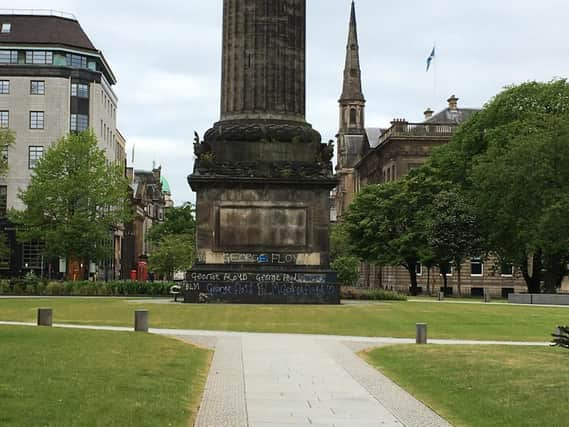Why was the Meville Monument in Edinburgh vandalised by Black Lives Matter protestors?


Standing on top of the Melville Monument in St Andrew Square is Henry Dundas, 1st Viscount Melville, whose nicknames included King Harry the Ninth’, the ‘Great Tyrant’ and the ‘Uncrowned King of Scotland.
Trained as a lawyer, he went on to become MP for Midlothian in 1774 and shortly afterwards a government minister who later served as the right hand man of Prime Minister William Pitt.
Advertisement
Hide AdAdvertisement
Hide AdAs Home Secretary, he used his influence to frustrate efforts to end the slave trade after William Wilberforce MP introduced his abolition bill to parliament in 1792.
Campaigners say this aspect of Dundas’ record must be illuminated alongside the imposing memorial in his name.
Dundas proposed support for Wilberforce’s bill but put forward an amendment that the abolition of slave trading would occur ‘gradually’.
Done to appease the powerful pro-slavery lobby, it is estimated that the 15-year delay to abolition created by the amendment led to a further 630,000 Africans being forced into a life of chattel slavery.
Prime Minister William Pitt later said that gradual abolition was an “enormous evil”.
Historian Sir Geoff Palmer, who has done much to illuminate Edinburgh’s links to the slave trade, is amongst those calling for the plaque at the monument to fully illuminate the impact of Dundas’ amendment.
A committe has been set up at Edinburgh City Council to establish the wording for a plaque but,
so far, no agreement has been reached.
Meanwhile, the monument was vandalised over the weekend as the Black Lives Matter protest organised in the wake of the killing of George Floyd by police in Minneapolis.
Advertisement
Hide AdAdvertisement
Hide AdEarlier in his career, Dundas, while serving as an advocate in Edinburgh, successfully represented former slave Joseph Knight and won the legal right for the young man to live in freedom in Scotland.
Knight had been brought from Jamaica to Scotland by his owner James Wedderburn but ran away from his master.
Knight filed a claim to protect him from becoming re-enslaved with the case ending up at the Court of Session.
After being represented by Dundas, Lord Kames found in favour of Joseph Knight with the ruling effectively finding that, while slavery might be considered legal in Jamaica, it was not in Scotland.
A message from the Editor:
Thank you for reading this story on our website. While I have your attention, I also have an important request to make of you.With the coronavirus lockdown having a major impact on many of our advertisers - and consequently the revenue we receive - we are more reliant than ever on you taking out a digital subscription.Subscribe to scotsman.com and enjoy unlimited access to Scottish news and information online and on our app. With a digital subscription, you can read more than 5 articles, see fewer ads, enjoy faster load times, and get access to exclusive newsletters and content. Visit https://www.scotsman.com/subscriptions now to sign up.
Our journalism costs money and we rely on advertising, print and digital revenues to help to support them. By supporting us, we are able to support you in providing trusted, fact-checked content for this website.
Joy Yates
Editorial Director